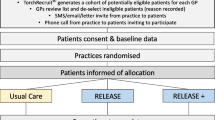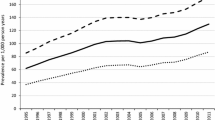Abstract
Background:The newer antidepressants are among the most commonly prescribed classes of medications. A favourable adverse effect profile and approvals for a wider range of disorders than their predecessors have fostered the growth of these drugs. However, newer antidepressants are appreciably more expensive than older medications, and the annual prescription costs of newer drugs are expected to continue to rise at double-digit rates. The price structuring of these medications is largely independent of their pill strengths, and splitting higher strength pills may reduce the average cost per dose by nearly half. Therefore, various health organisations and consumers have been using pill splitting to reduce prescription costs. Antidepressants are well suited for pill splitting because their therapeutic effects depend upon long-term alterations in neurotransmitters, and small variations in dose are not critical.
Objective:To examine the potential savings for various purchasers — health organisations and consumers — that can be derived from pill splitting of newer antidepressants.
Design and setting: Product review and simulation study in the US healthcare setting.
Methods:All new antidepressants with pill strengths that could be halved and were not in capsular or time-release forms were included. Expenditures for purchasers of these pills were calculated using a variety of factors, such as the level of discounting of official average wholesale costs, average retail costs and the site of prescription dispensing.
Results: Seven antidepressants were included. In 2000, 42% of the pills of these antidepressants were at strengths that permitted splitting. If all eligible prescriptions had utilised split doses, purchasers could have saved over $US1.7 billion. The bulk of the saving ($US 1.5 billion) would have been realised by pill splitting of only three medications — sertraline, paroxetine and citalopram.
Discussion and conclusions:The economic rationale for pill splitting of antidepressants is compelling for both health organisations and individual consumers. The literature indicates that when pill-splitters are used or a pharmacy cuts the pills, patients are satisfied and compliance is not reduced. However, pill splitting may be inadvisable for some subgroups of patients with reduced cognition or sensory or motor impairment, or older persons on polypharmacy. Pill splitting can be facilitated by mandating manufacturers to score all tablets, requiring pharmacists to fill prescriptions for split doses, and giving pharmacists incentives for splitting pills for patients. Finally, large-scale studies should be undertaken to examine the clinical effectiveness of, and financial savings from, pill splitting.

Similar content being viewed by others
Notes
‘New’ antidepressants were defined as all antidepressants under patent protection in 2000.
References
Cardinale V, editor. 2000 Drug topics red book. Montvale (NJ): Medical Economics, 2000
Pincus HA, Tanielian TL, Marcus SC, et al. Prescribing trends in psychotropic medications: primary care, psychiatry, and other medical specialties. JAMA 1998; 279: 526–31
McEvoy JP. New treatment options to improve clinical outcomes. J Clin Psychiatry 1998; 59: 3–4
Health Insurance Association of America. New study predicts ongoing double-digit spending increases for prescription drugs. Press release, 2000 Apr 13
Sasich LD, Torrey EF, Wolfe S. International comparison of prices for antidepressant and antipsychotic drugs. Washington, DC: Public Citizen’s Health Research Group, 1998
Reinhardt UE. How to lower the cost of drugs. New York Times 2001 Jan 3; Sect. A: 12
Bell H. Drug prices in search of a fix. Minn Med 2001; 84(1): 24–31
National Advisory Mental Health Council. Health care reform for Americans with severe mental illness: report of the National Advisory Mental Health Council. Am J Psychiatry 1993; 150: 1447–65
Appleby J. Is it OK to split pills to cut costs? USA Today 1999 May 20: 38
Pill splitting generally safe — except with sustained release. Clin Psychiatr News 2001 Mar: 51
McDevitt JT, Gurst AH, Chen Y. Accuracy of tablet splitting. Pharmacotherapy 1998; 18: 193–7
Fawell NG, Cookson TL, Scranton SS. Relationship between tablet splitting and compliance, drug acquisition cost, and patient acceptance. Am J Health Syst Pharm 1999; 56: 2592–5
Ayd FJ. Biological psychiatry update. Psychiatric Times 2001 Mar: 14
Cohen CI, Cohen SI. Potential cost savings from pill splitting of newer psychotropic medications. Psychiatr Serv 2000; 51: 527–9
Stahl SM. Essential psychopharmacology. New York: Cambridge University Press, 1996
IMS Health Inc. Combined audits: retail and provider perspective. Plymouth Meeting. Plymouth (PA): IMS Health Inc., 2000
McKesson Item Catalog. San Francisco (CA): McKesson HBOC, 2000 Dec
Carr-Lopez SM, Mallett MS, Morse T. The tablet splitter: barrier to compliance or cost-saving instrument. Am J Health Syst Pharm 1995; 52: 2707–8
Thompson C, Peveler RC, Stephenson D, et al. Compliance with antidepressant medication in the treatment of major depressive disorder in primary care: a randomized comparison of fluoxetine and a tricyclic antidepressant. Am J Psychiatry 2000; 157: 338–43
Sedrati M, Arnaud P, Fontan JE, et al. Splitting tablets in half. Am J Hosp Pharm 1994; 51: 548–50
Acknowledgements
The authors would like to thank Ms Barbara Singh for her assistance. The authors have no potential conflicts of interest that are directly relevant to the contents of this article.
Author information
Authors and Affiliations
Corresponding author
Rights and permissions
About this article
Cite this article
Cohen, C.I., Cohen, S.I. Potential Savings from Splitting Newer Antidepressant Medications. CNS Drugs 16, 353–358 (2002). https://doi.org/10.2165/00023210-200216050-00007
Published:
Issue Date:
DOI: https://doi.org/10.2165/00023210-200216050-00007




